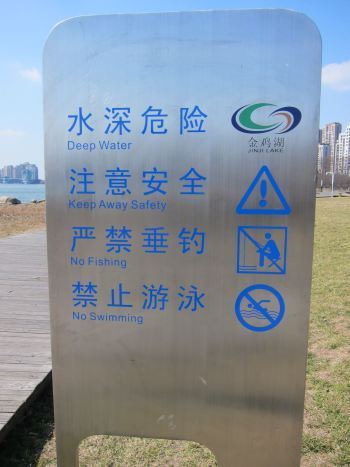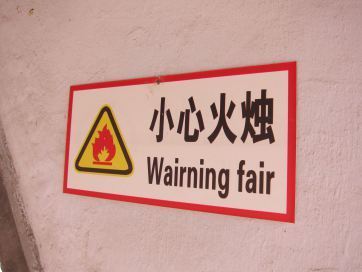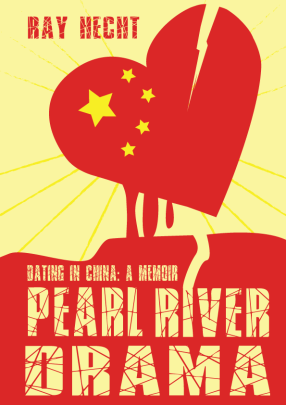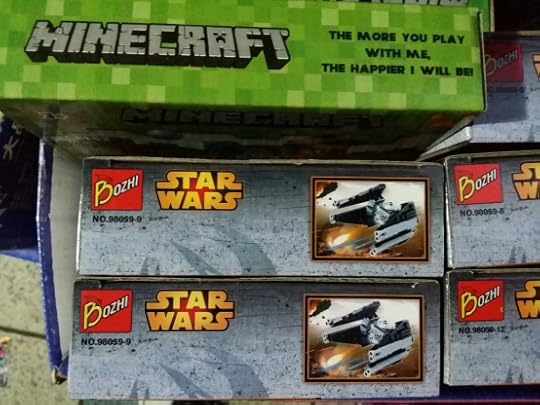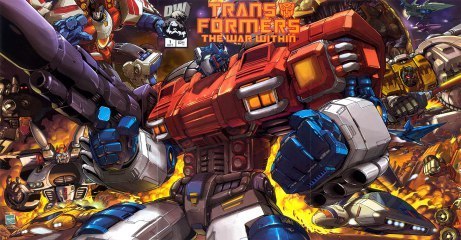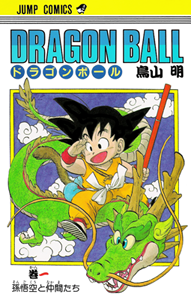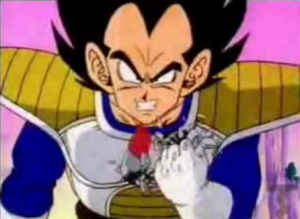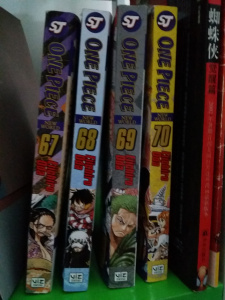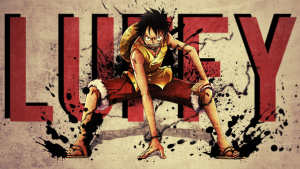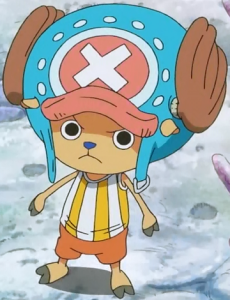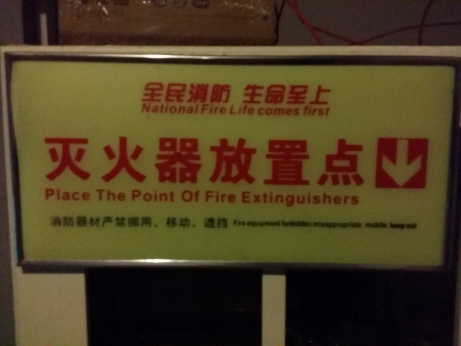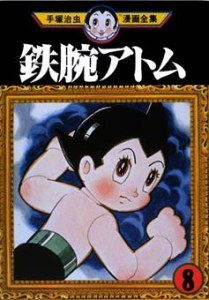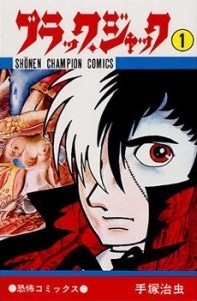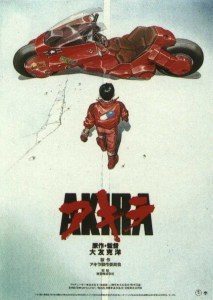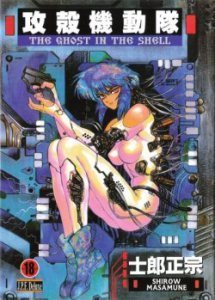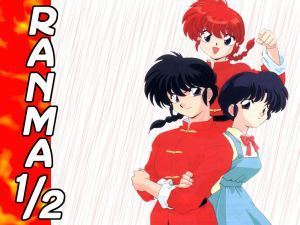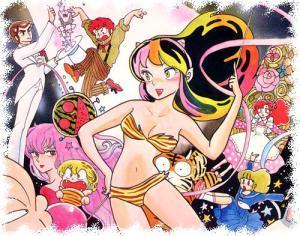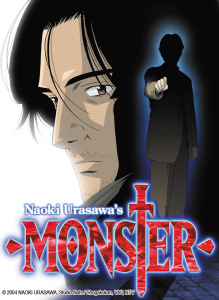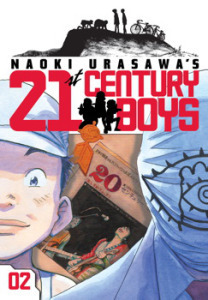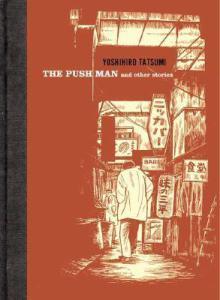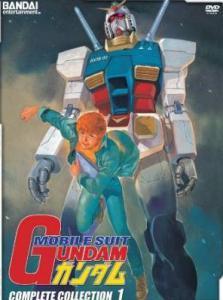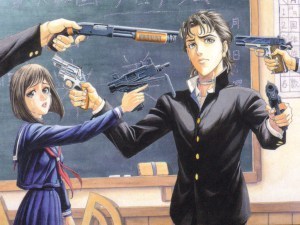Ray Hecht's Blog, page 34
March 5, 2015
Chinglish by Marta
Thanks to martalivesinchina.wordpress.com for this weekend’s Chinglish donations. Go and follow her blog, it’s Spain meets China!
Toilet facilitates and fair wairning…
Enjoy:
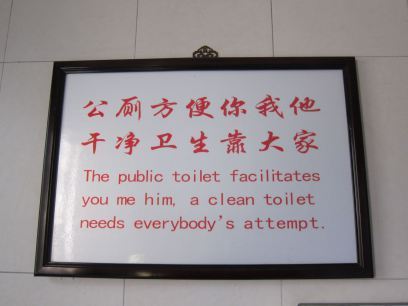
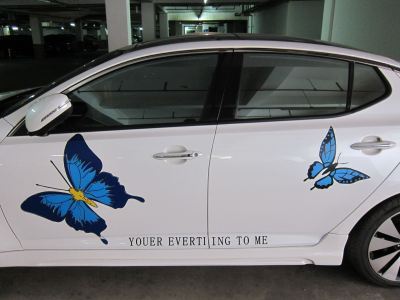

March 1, 2015
Comics go Indie
Obviously, comics needn’t always be about superheros. Not even ninjas or pirates or robots. Comics are simply a medium and can contain as many diverse genres as prose novels or film. The simple juxtaposition of words and pictures can create works of high literary value, and has for decades.
I don’t have to explain that to you, right? The whole ‘comics are for grownups’ conversation has been cliché for ages already.
Point being, I do read comics of a higher caliber. I enjoy comics written by authors of literary merit. Not only that, but sometimes I try to support comics that are not published by the big media comics (DC being owned by Warner Bro. and now Marvel owned by Disney), such as publishers Fantagraphics, Kitchen Sink Press, and Drawn & Quarterly. It’ good to support storytellers who have a more independent streak, as well as those fun boy’s adventure stories.
I like an auteur who both writes and draws, in cheap black & white, getting to the core essentials of humanity.
In no particular order, here are my favorite indie comics.
Will Eisner is a legend. Credited with popularizing the concept of graphic novels in the first place, one of his seminal works is the very deep A Contract With God.
Dealing with issues of Judaism and American identity and the (non) existence of God, this sort of book has nothing whatsoever to do with capes.
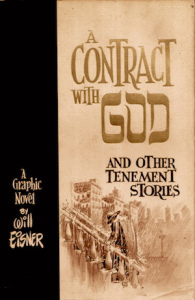
I also recently read Fagin the Jew, among others. There’s a consistent theme. Also, Eisner going back to his early 1940s days with the Spirit was very good at playing around with the panels of the page. A serious writer and artist all at once.
Nowadays, Dan Clowes is my kinda guy. One of the great alternative cartoonists of all time. His anthology series Eightball was weird and brilliant. The surreal Velvet Glove Cast in Iron. His latest book Wilson about a misanthrope’s misadventures.
Yet the best of the best is undoubtedly Ghost World, about two young women complaining and trying to figure themselves out. It was making fun of hipsters long before it was cool to make fun of hipsters. The film is a fine film as well, but if you’ve ever seen it please treat yourself to the original.
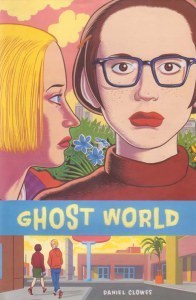
One running them of indie comics is that they are often autobiographical. Time and time again the format of the memoir has led to some great writing throughout the history of literature. In comics, this goes all the way back to the pseudo-pornographic comix of R. Crumb in the 60s.
Contemporarily, Blankets by Craig Thompson is a wondrous thing of beauty. About young love, a Christian boy losing his innocence in naive middle America, with powerful art. It hit me so hard the first time I read it in my early twenties, and I’ve gone back to it from time to time when in the mood for that soft melancholy feeling…
Craig Thomspson’s more recent middle-eastern epic Habibi is also quite worth the read.
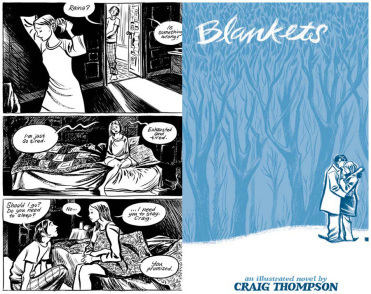
Speaking of autobiography, Maus by the great Art Spiegelman. I don’t have to sell this one; he won the friggin’ Pulitzer Prize for this famed story utilizing the metaphor of Jews as mice and cats as Nazis. Yet, as much as it is a very important work about the Holocaust, I think it is almost overhyped on that aspect. At it’s core. Spiegelman speaks about his relationship with his father more than about war atrocities. Still, intense on all levels.

If i may be more irreverat for a moment, fuckin’ Sin City by badass writer-artist Frank Miller. I’ve already spoken of him in my 80s Marvel post for Daredevil, and my Batman post for The Dark Knight Returns. He may be insane now, but he used to be among the greats.
Sin City was published by Dark Horse Comics, which is a little mainstream in that they also had the rights for Star Wars comics and various other franchises, but Sin City was creator-owned from the beginning and Dark Horse is a solid company on respecting artist’s rights.
I loved these graphic novels in my teens, illicitly reading them in the bookstore and peeking at the nude parts. Like a rated X noir movie, it was unrelenting. Marv, Dwight, Hartigan, Nancy. A Dame to Kill For, the Big Fat Kill, the Hard Goodbye. Damn.
Guess what. I know they’re popular and sure he even codirected, but I don’t like movies at all. Sin City is best as a hardcore comic, nothin else.
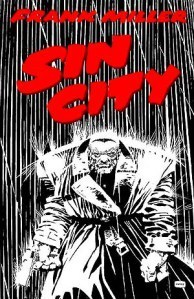
Meanwhile, some independents do outright sell out.
Take the Teenage Mutant Ninja Turtles. I’ve been a fan since I was a little kid, before I even knew the comics. Eastman and Laird’s famous creation was originally an independent satire of… get this… Frank Miller’s Daredevil.
It was good stuff. I still like the outer space saga with the triceratons and utrons.
Then of course the cartoon and breakfast cereal and movies, possibly biggest selling out ever in the history of selling out. Some of the latter cartoons were okay.
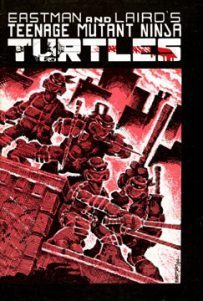
Getting back to proper black & whites, I have here the Optic Nerve anthology by Adrian Tomine, who decidedly never sold out. He has real street cred in comics.
So slow though. One issue a year. But what magical issues, little stories of normal people’s lives. Here is the Shortcomings collection, a treatise on the Asian-American experience that I suspect is semiautobiographical.
Note the signature on issue 10. I met him at a con several years ago. He was so nice!
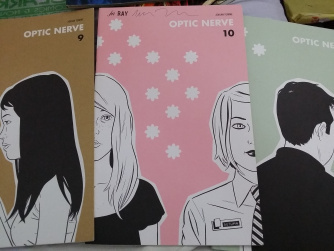
Finally, I must add Kabuki by David Mack. The comic is admittedly in color, and has shifted publishers that even includes Marvel, but Mack always maintained control. Ostensibly about a ninja assassin, Kabuki bounces off that premise with minimal action, delving into more psychological issues. Half the time she’s in the psych ward.
And what elaborate paintings, a masterpiece.
From the Skin Deep graphic novel:
I also love the Akemi collection.
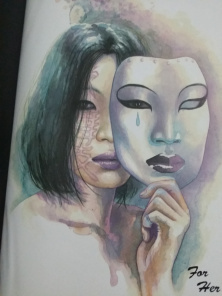
So much more. What did I leave out?
There’s Dave Sim’s classic Cerebus. The philosophical earth pig, a satire on Conan the Barbarian who soon found his own voice. I never completed all 300 issues, but me and my friends did read a lot in high school. The High Society phonebook-sized graphic novel, Church & State.
Persepolis by Marjane Satrapi, another biography, this time with themes of revolutionary Iran and a girl’s coming of age. I should also note that comics needn’t always be for boys about boys; there is a strong tradition of female cartoonists beneath the mainstream.
I have a few volumes of Stan Sakai’s Usagi Yojimbo, funny animals in a dead serious samurai setting. Very well done.
Black Hole by Charles Burns, such atmosphere.
More and more. Wish this was a longer post, but usually the difference between one-off graphic novels is that you read one and you’re done. Not quite as much content as the nerdier stuff that you collect for years.
I’ve always picked up as many comics as I can, from a variety of genres, and I must admit that the superhero thing tends to get you obsessive, and following manga tends to have a million volumes. But just believe that I can be literary too!
Actually, there is a mainstream comics imprint famous for it’s literary, adult comics. Vertigo! Which is a part of DC Comics, owned by Warner Brothers, but they are famous for a host of respected creator-owned titles. Even in color. Some of which are my favorite books ever.
Imagine the HBO of comics, that’s Vertigo.
Next up: “Suggested for Mature Readers.”

The latest on eBooking
The latest news on my eMemoir: “Pearl River Delta” available on Amazon’s KDP:
http://www.amazon.com/dp/B00RQQIA26
Currently free, limited time promotional offer!
(By the way, the Kindle app is free. I’m not just self-serving here, you should get it and read up more)
Please take advantage and check it out. As always, a review would be quite appreciated…
This is my last chance at eBooking before my real novel comes out, “South China Morning Blues” published by Blacksmith Books out of Hong Kong. Hopefully, some readers will enjoy my creative stylings and stick around for such future projects.
Here is a brief preview, although it’s only a working cover:
http://www.amazon.com/South-China-Morning-Blues-Hecht/dp/9881376459
And in other news, I’ve started an official Goodreads author profile. Still much work to do on that front,
https://www.goodreads.com/author/show/7982385.Ray_Hecht
Stay tuned for more!

February 24, 2015
O YEAH – and ‘bootlegos’, get it?
I recently terribly injured my finger while cutting vegetables, and needed to buy a Band-Aid. At least, in America we call these bandages Band-Aids. I know you Anglos call them plasters.
Yet come on: OYEAH STERILE WOUND PASTE??
Also, let me add some bootleg Legos — hereafter referred to as ‘bootlegos.’ Get it? I slay me.
I bought the Star Wars TIE Fighter. Sorry
The Minecraft one charmingly says “The More You Play With Me, The Happier I Will Be!”
Cute right~

February 22, 2015
More than Meets the Eye: the Transformers blog
Manga Fan:
Does the following count as anime/manga?
We all know the theme song.
There was a certain cartoon — a classic American cartoon of the 1980s that happened to be brought to you by Ronald Reagan’s toy advertisement deregulation. (So THAT’S why there were so many awesome 80s shows which were basically advertisements for toys.) A certain program we all grew up with, and it had Japanese origins.
In the early 80s Hasbro bought up several toy lines of transforming robots hailing from Japan. Marvel was hired to create the backstory, as the comic company had done with G.I. Joe. Jim Shooter and Dennis O’Neil created the Autobots vs. Decepticons of the planet Cybertron premise, with all the character profiles and so on.
The show was produced by Japan’s Toei Animation, and it was a hit. Transforming robots, what’s not to love! There was also Gobots that predated it a bit, from Tonka and Hanna-Barbera, and the less said about that.
To me, the highlight was 1986’s Transformers: The Movie, set in 2005, a brilliant piece of outer space escapism that killed off Optimus Prime and had all Cybertronians facing off against the planet Unicron. AWESOMENESS.
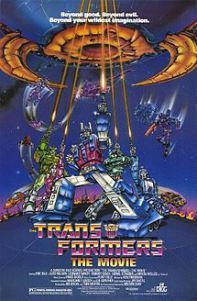
And I fucking hate the new Hollywood blockbuster movies. They are shit. I’m not even going to get into that. No, I am all about the Generation 1.
Going back to the post My History of Comics, when I was about 11 I moved into some relatives’ house and inherited a ton of 1980s Marvel Comics. I didn’t mention that many of those comics were the original Transformers. I had almost all the issues from # 1 to 55 written by Bob Budiansky, although there were gaps filled in later.
It was originally intended to be in the mainline Marvel Universe, and issue 3 featured Spider-Man vs. Megatron! That full issue to this day can’t be legally reprinted by other companies.
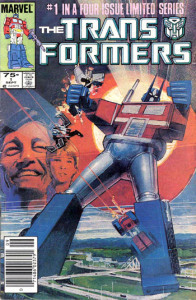
Actually, it was fascinating to me and much better than the TV series. Optimus Prime died early on, replaced by Grimlock. Prime did come back to life. Megatron died and came back too. The Headmasters spinoff featured more complications, and it built up to an epic mythology. Even a crossover with G.I. Joe.
It got even better after 56 as writer Simon Furman took over the franchise until the final issue 80. He said that at the time Hasbro was winding down the product line and he was given free reign. He incorporated much of the futuristic film’s characters, and told of the secret origin of the Transformers. Most of those issues are rare and valuable today; I didn’t read much until reprints in graphic novels years later.
I did however eat up the short-lived 12 issues of the Generation II written by Furman. It was pure 90s Marvel, violent, and I an adolescent just loved it.
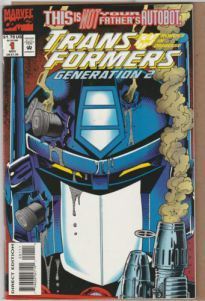
Nowadays, it’s hard to recall that there was a time when the popularity of Transformers was uncertain. In the early 2000s, Pat Lee led a resurgence with high-quality art in the anime style, and Dreamwave was licensed to publish new Transformers comics.
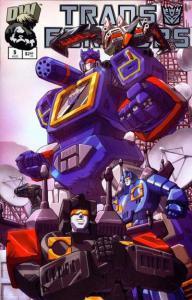
Now a proper grownup, I geeked out as only a well-read adult can. I’m too old for toys. Most of the time. There more decorations than toys. Yet will not apologize for my taste in fine literature.
The first two miniseries were actually not that great, but then an ongoing series by Brad Mick got much better. I felt they were building up to the film’s 2005 year, and then they were going to get into Arcee and the female Autobots, when Dreamwave abruptly went bankrupt and the whole thing was stopped short at issue 10.
Simon Furman also wrote an amazing prequel set of series, The War Within, on the ancient beginnings of the Cybertronian civil war. The art and redesigns were meticulous. Two 6-issue miniseries, but then a third one cancelled in the middle.
IDW took up the mantle and currently publishes many Transformers comics. I hear some of them are supposed to be good. Sadly, I got burnt out on reboots and moved abroad and don’t follow.
I really should get around to reading Last Stand of the Wreckers…
Then again, there was one IDW book I insisted on reading.
Firstly, note Larry Hama’s G.I. Joe: A Real American Hero. This is a comic that continues the continuity of the 80s/90s Marvel series, albeit now published by a different company. Dreamwave gave the same opportunity to Simon Furman to finally finish his Transformers masterpiece after all these years. The first issue started at “81”, and then concluded at 100. I purchased the first ten from America, then had some complications getting the rest, and at last ordered the final two graphic novel volumes in Hong Kong. It was a good read, not as good as Furman’s first run, but pretty fun. Hot Rod’s destiny and all that. They are not my bookshelf right now, the pic below was taken at home not stolen from a wiki site:
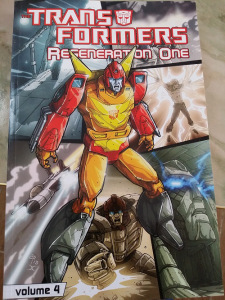
That is it for Transformers, one of the most cherished franchises of my youth!
All these corporate characters. Really, man. Whether American superheroes or Japanese warriors or American-Japanese robots, all are fun but ultimately big money shticks. Don’t I ever read anything more literary? More indie?
I do. Of course, though I make no apologizes, there’s a lot more to comics than these boy’s adventure stories. There are all kinds.
Next: Finally, literary indie comics

February 20, 2015
Zhuhai Chinglish!
Happy Chinese New Year!
新年快樂!
I’ve seen a lot of goats lately…
Just got back from Zhuhai yesterday, a tourist beach town not far from here. Bordering the former Portugese colony of Macau, Zhuhai is also a Special Economic Zone but does not equal the hustle and bustle of Shenzhen’s metropolis. We went to a hot springs resort and had a lot of fun.
And, getting out of the big city helps to find a \lot more hilarious mistranslations.
Especially menus. Can’t you just taste that authentic Cantonese cuisine of pig brain and bullfrog?
I remain a vegetarian, more inspired than ever.
Presenting: Zhuhai Chinglish

Mmm hot dog bowel
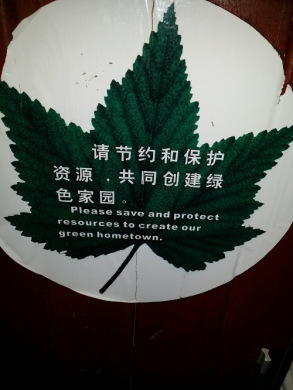
Green hometown is nice
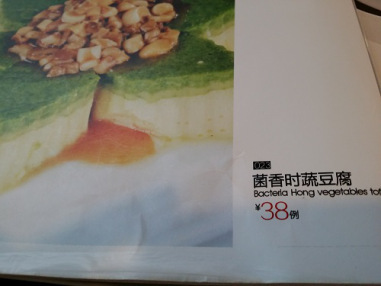
Bacteria, okay…..

Germs, appetizing
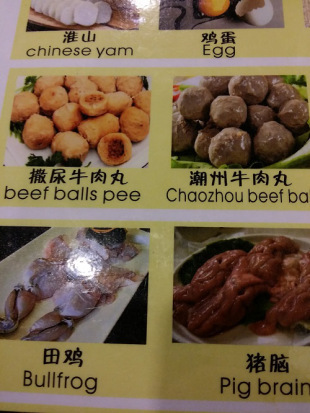
Beef balls pee, yeah! Not too mention the rest
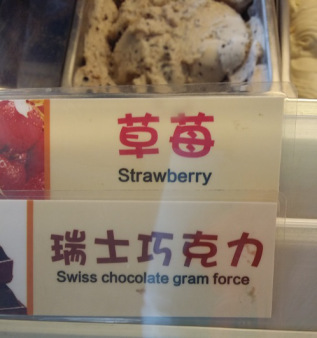
chocolate gram force, I think I saw that cartoon before

Safety first, no spinning at the pier
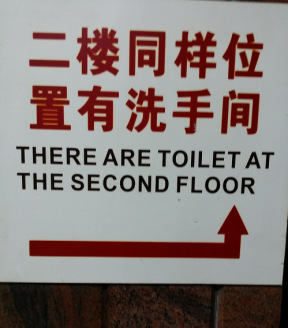
Good to know

February 15, 2015
Shonen Jump 少年ジャンプ Shōnen Janpu!
Previous: Manga 漫画 マンガ!
When I wrote about my favorite manga growing up in the 90s and 2000s in the above, you may have noted a certain title concerning dragons and balls to be noticeably absent.
And when it comes to nowadays, you may have wondered where are the pirates and ninjas.
That’s because Shonen Jump deserves a post all it’s own
The most popular comics in the world are published by Shonen Jump anthology magazine in Japan. Although Shonen implies adolescent boys, males and females of all ages have enjoyed these tales.
The Japanese comic model is more sustainable than the American magazine system, with its color and ads, as in Japan you can buy these phone book-sized anthology books before the little tankōbon graphic novels.
In 2003, Viz published an American edition. I started from the beginning, reading my favorite titles over a decade a go. I believe it’s only digital now.
But let me go back further than that, to Dragon Ball and its maturation into Dragon Ball Z (the distinction is only made in the anime series on television). It was certainly one that consumed my teenagehood. Akira Toriyama, already famous for Dr. Slump, created this Monkey King analogue about a certain Son Goku searching for dragon balls to make wishs and the adventures along the way. It soon became his most popular series, and he went on with it to ridiculous lengths
The fighting became more over the top, with cosmic escalations. Characters began to have the power to destroy the Earth — although the Earth always was this strange fantasy-land which is another trope of the Shonen Jump greats below. Further tropes were time skips and subsequent aging, villains from earlier arcs becoming heroes, and characters dying yet continuing on in an afterlife setting. Not to mention the slow pace of story-telling, waiting for our hero to save the day after training…
Power level over 5000! Remember when that was a big deal to Vegeta? Then Super Saiyans and 2s and 3s and androids and Majin Boo. The best villains were always the aliens, though I almost thought the story should’ve ended with Frieza.
Dragon Ball GT just sucked, only consider the canon. Only those based directly off the manga comics were canon, that goes for all anime series. Though the occasional film directed by the creator counts as well, such as Battle of the Gods and One Piece Z and the upcoming Naruto the Last.
Eventually, I read the entire manga; that’s 42 books at 519 chapters. And the current stories I like — Naruto and One Piece — run far longer than even that.
But I was first introduced to DBZ on television. In middle school, there were a few episodes of Dragon Ball and Dragon Ball Z on network television. That didn’t last long, but luckily Cartoon Network aired the whole series and it took off on American pop culture and we all remember it fondly. It was an era.
I also liked Yu Yu Hakusho/Poltergeist Report, back in the early days of Toonami. The story of bad boy ghost Yusuke contained similar themes of afterlife and demons and saving the world in increasingly-epic fights. Much shorter though; didn’t take all those years to go through series — manga nor anime.
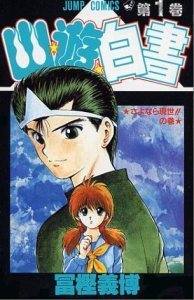
Also, about another dead guy. Bleach I started out reading but never got too into it. More power to you if you happen to be a fan.

These days… Naruto!
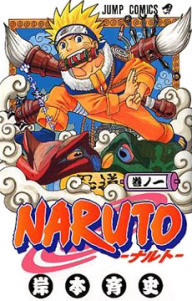
Oh how I loved Naruto. So many characters, so many ninja students. Shikamaru was my favorite. The saga of Sasuke was fascinating but too overdone. Of course, Gaara is awesome. Too many to choose really. Mangaka Masashi Kishimoto created a great Japanese-themed fantasy series if there ever was one, of ninja villages and endless students and teachers and power ups.
Just ended. What more can I add? RIP Naruto, (spoiler time,but come on you know) glad the guy actually got to become Hokage!!!
My absolute favorite manga is One Piece. I am still reading the latest books. Legally. Yes, legally. Even while living abroad I make it a point to always purchase the latest officially-translated volumes published in English by Viz, through their official Shonen Jump imprint. See here not a pic I swiped online, but my own bookcase right here in my apartment.
I own the latest being volume 72, which goes up to chapter 721.
I have already ordered number 73 and can’t wait until it’s here!
Reading these things tends to be a long-term investment. Ah, and the memories. I remember the early days of reading in Ohio, California, and then seeking out comic shops in Hong Kong.
When I first started reading Shonen Jump over a decade ago, I was sold with Dragon Ball. Naruto soon became my new favorite. But after a while, One Piece became one of my absolute favorite comics of all time. In the States, I think Naruto is the highest-selling manga, yet One Piece is the most popular manga in the world. (And, hence, the most popular manga in the world is the biggest comic in the world.) I believe that popularity is well-deserved.
Not only that, but I believe One Piece is extremely subversive and has a very deep message. While it’s often a comedy about super pirates fighting other super pirates, with all that follow-your-dreams and the power-of-friendship stuff so prevalent in shonen thematics, the bigger picture of the series has slowly revealed a world in which the navy is extremely corrupt. It’s the government that are the true villains. And the only way to be a free person is to be an outlaw. Revolution! Let that sink in.
For example, the comic is extremely big in China. A whole generation of Chinese kids are being brought up, subtly and not so subtly, to learn to question the highest levels of authority. How amazing is that?
Master mangaka Eichiro Oda has created a perfect blend of ridiculousness with world-building on the level of Tolkein and Stephenson. In the rich mythology of the One Piece world, there are giants and fishmen and robots and if you eat a devil fruit you just might get a superpower.
The star character is Luffy, who is a rubber man. Oda has said in interviews that he chose the stretching ability because he wanted to keep in funny so kids wouldn’t be upset in fight scenes.
“Gomu Gomu no…!”
Oftentimes the fun of devil fruit users is to see how they square off against each other. Luffy, being a rubber man, was the only one who could square a hit against a lightning man. Other times wax wax powers defeat liquid poison powers, and so on.
Although it’s shonen and our heroes usually win through tremendous bursts of willpower, sometimes they don’t win. Sometimes Luffy’s brother Ace is killed by the navy and the admirals and evil pirates are strong enough to defeat Whitebeard :(
Other favorite characters include the ultra-cute mascot Chopper, a reindeer doctor who has the power to transform (kind of) into a human.
I like the liar in over-his-head Usopp, directions-impaired swordsman Zoro, kickboxer cook and lady’s man Sanji, and the mysterious submariner Trafalgar Law.
One Piece is still going strong, only having their time skip fairly recently and I’d estimate the series is only halfway through at so many volumes. I’ll be reading for many years to come before I find out if Luffy truly becomes the Pirate King and defeats any of the Four Emperors of the New World seadom.
That covers the most important of the Japanese set. Still, I could get more into robots.
There is a certain robot franchise that happens to be a mix of American and Japanese writing. Long ago, the American toy company Hasbro bought several Japanese transforming toy lines, and had Marvel Comics write up the backstory of robots in disguise from the planet Cybertron. Then, a hybrid American and Japanese production created a classic 80s cartoon, peaking with an animated film. Yet more comics came out in the 2000s. Though I am morally opposed to the blockbuster films.
Next: howsabout Transformers

February 12, 2015
Fire Extinguishers
That’s all I got this week. For emergency services, be more precise! Or something.
I know I know, I can do better. What can I say, it was a dimly lit bar and I was partying a bit. I vaguely remember the fine print was funny. Guess we’ll never know.

February 9, 2015
Manga 漫画 マンガ!
Patriot that I am, I have always been a great fan of American comics — and by association that goes for various British authors as well. I grew up on superheroes primarily, though of course comics is a medium not a genre and there’s no reason I can’t read more literary and independent series along with the flying adolescent fantasies.
However, so far I admit to having been too Western-centric. There happens to be a whole other country with a tremendous comics tradition that dwarfs the whole of North America and Europe together. I speak of course, of that mysterious land of Japan.
I read:
Goodreads shelf: manga
The Eastern style is so different, and in many ways superior to the assembly-line system of writers, artists, inker and colorist . The cartoonist in Japan is almost always both author and illustrator, the he or she is helped by assistants. Black and white except for special occasions. Adaptations, usually made famous in anime productions, are word-for-word and shot-by-shot remakes extremely faithful to the source material. Comics being taken seriously by the literary world is fairly recent in the West, yet Japan embraced adult comics right after the post-war period as an efficient form of entertainment when they couldn’t afford to make films. They are produced quickly, read fast, and often stories come into hundreds of chapters (dozens of graphic novel volumes) for a story to be patiently completed by the auteur.
I recommend the brilliant essay/graphic novel Understanding Comics by Scott McCloud to delve deeply into the nature of East vs. West art forms, upon the subjects of minimalism and respect for words & pictures at once as well as studies on neurological effects of cartoons.
Let’s start with some history. Best place to begin is with Osamu Tezuka, the God of Manga. An insanely-prolific writer and artist, the mangaka drew over 100,000 pages in his lifetime! Originally inspired by Disney stylings, he soon found his own voice in the 1950s and 60s. Funny how Disney later ripped off his Kimba the White Lion with a certain lion king…
I came late to the party, but did all I could to read his best works in my late teens and early twenties in the 90s and 2000s.
You may know the character of Astro Boy.
Tezuka was originally trained as a doctor before he found his artistic calling, and his medical drama Black Jack comes highly recommended.
There was also Adolf, about World War II. Buddha, biography of the holy one. Phoenix, an epic tale that bounced from ancient Japanese history to the far future.
Here’s the Goodreads shelf for more:
Tezuka
Now, I wasn’t watching the Astro Boy cartoon in the 1960s. I got into anime in the 90s like everybody else starting with a VHS tape of Akira.
I was way too young to be watching a movie like that, and I was blown away. The most badass cyberpunk film ever made, still awesome today.
“Neo-Tokyo is about to explode.”
The comic was even better. While the film had the title character — the government pscychic test subject Akira — only as brain tissue in jars, the comic had the super child reborn. And, when Neo-Tokyo was nuked the film ended. That was only half of the comics series. Then it continued twice as long with in the post-apocalyptic wasteland of World War IV. With incredibly detailed art work by Katsuhiro Otomo, who also directed the film.
There were higher standards back then. When manga really blew up in the 2000s, we learned that Japan produces a lot of crap as well. But in the 90s only the best of the best was worth translating into English. Dark Horse Comics in particular was the quality publishing company of record.
Ghost in the Shell, by Masamune Shirow, took hard science fiction to a whole other level.
Masamune Shirow was never very prolific, but his books had a level of intricacy and know-how never before seen. Appleseed was more his opus, but Ghost in the Shell became his main franchise still going strong today. I enjoyed Black Magic and Orion equally.
But it wasn’t all seriousness and mindfuck scifi. A lot of these comics were more fun. Take the comics published by Viz:
I remember me and my sister bonding over Ranma, the gender-bending comedy of a martial artist who turns into a girl, with bunches of supporting characters who turned to animals. Challenging cisgender heteronormalcy before it was cool.
I wasn’t as into Sailor Moon as my sister, and most Shōjo is frankly crap. It was the works by top female mangaka Rumiko Takahashi that were so funny and so creative. I went further back, and discovered old Urusei Yatsura stories from the 70s about an alien demoness named Lum and her pervert ‘boyfriend.’
“Dah-ling!”
I never did get into Inuyasha though.
Back to the world of grownup books, I must mention the brilliant Naoki Urasawa. Masterpiece after masterpiece, gripping dramas, perfectly controlled art. What a storyteller.
I first read the crime drama Monster, and moved on to the epic 20th Century Boys; the tale a strange cult incorporating kid’s mythology and global dictatorship and rock n roll. I have seen all the live-action films, but still haven’t made it to the end of the manga. Next I need to read Pluto.
See, very literary. Not to mention the indie comics tradition of Japan, such as those by Yoshihiro Tatsumi. Very dark tales of urban life, the short stories from the Push Man collection and the Abandon The Old in Tokyo are must-reads.
Although I am talking about comics, let’s not forget that manga more often than not overlaps with anime. While most animated works in Japan are respectful adaptions of the original comics, many are original productions. Evangalion from Gainax comes to mind. Robotech/Macross, etc. Many of my favorites.
On the subject of giant robots, I used to be the biggest Gundam fan. I prefer Universal Century to those spinoffs like Gundam Wing, but I used to absorb as much as I could. About to catch up on Gundam Unicorn. I believe they were originally novels. There were many animation-to-comics adaptations very much worth reading, like the legendary Origin by character designer Yoshikazu Yasuhiko.
Lastly, let’s talk about novels.
As we all should know by now, Hunger Games is suspiciously similar to the cult Japanese film Battle Royale, released in 2000. I’m not one to accuse someone of plagiarism or anything, but just saying.
Yet, did you know Battle Royale was first a novel by Koushun Takami? And, did you know that the novelist didn’t approve of the film at all and had written a manga version so as to have the last word on the visual take?
Funny, because the manga version was legitimately translated and published long ago. But for years only the pirated film was available. Which were you familiar with?!
Anyway, in this rare case the author wasn’t the illustrator of the modern manga classic. Perhaps that’s why the writing (and art) were so top-notch.
Over the course of 15 volumes, every single character had a unique personality. No throwaway deaths. You would read and cheer on a major character, and they he or she would be killed and it broke your heart. The violence was all the more powerful in this smart action story.
How can I express the intensity of this work? I know, copy-paste from Wikipedia:
The manga follows the plot of the novel fairly closely, but expands on the backstory of each of the students. It is far more sexually graphic than the novel and film versions, but like them, is noted for its intense, gory violence.
That’s Japan. Nowhere else in the world comes close.
If you haven’t noticed, I have left out a lot of important manga works. The above are among my favorites, and yet there’s also… Dragon Ball! (And, Z!) Naruto! My very fave of all One Piece!! How can those be absent, you ask??
The answer involves the greatest anthology series of shōnen comics in the history of ever, and it will take me a week to organize my thoughts about that.
Next post: Shonen Jump


